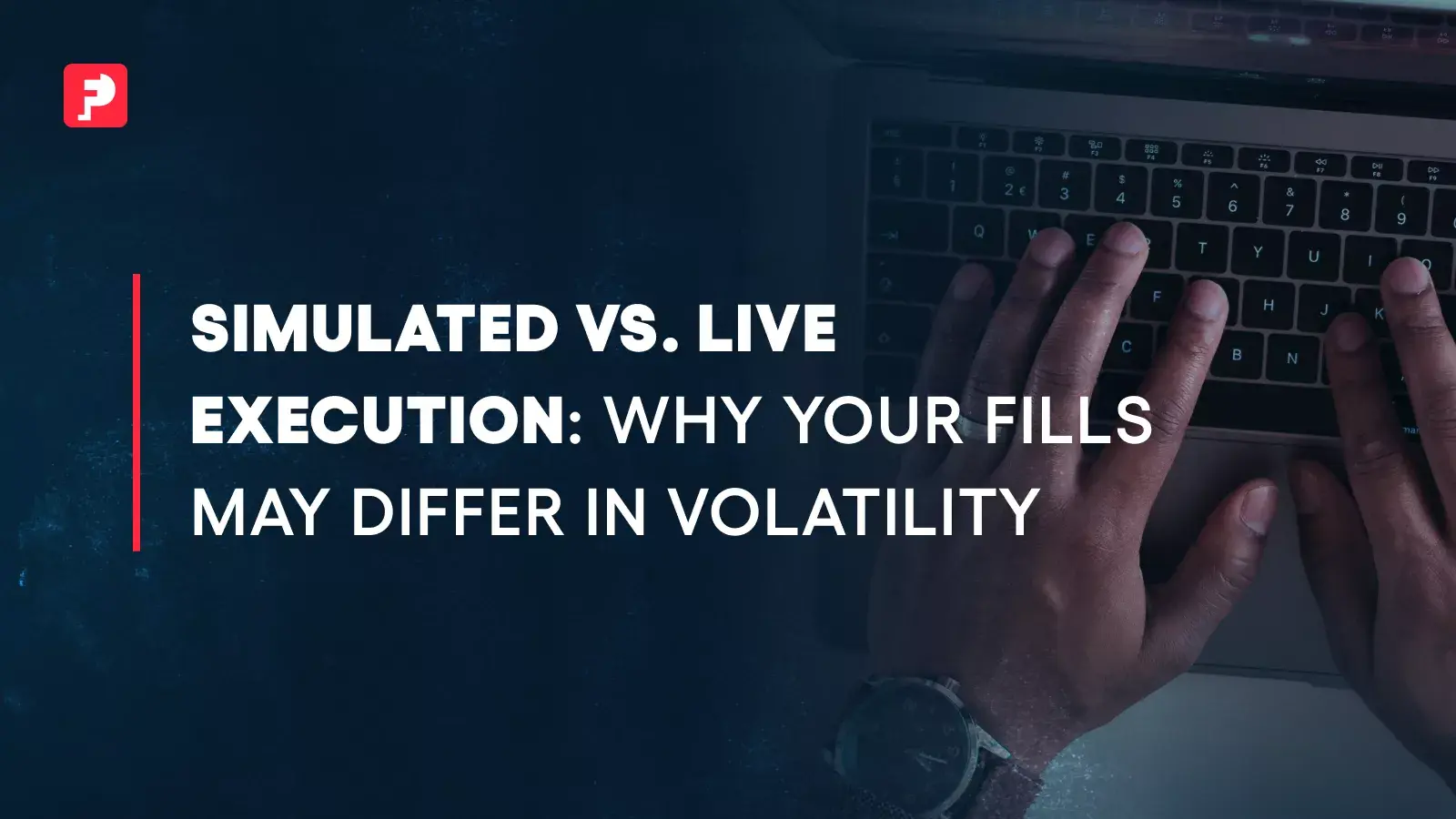Trading the largest forex pairs is not guesswork. It requires a verifiable, systematic blueprint built on data.
This guide shows how beginners can instantly apply three proven analysis methods: interest rate differentials, high-impact economic data, and core technical structure to consistently identify high-probability opportunities in EUR/USD (the major) and GBP/JPY (the high-volatility cross).
Every systematic edge starts with discipline and structure. FunderPro supports traders who think like professionals with transparent rules, fair evaluation, and scalable funding opportunities.
1) The Anchor: Systematic Analysis of Interest Rate Differentials
Interest rate differentials—the difference between the policy rates of two central banks—are among the most powerful long-term drivers of currency value.
Systematic traders focus on the expectation of rate changes, which drives capital toward higher-yielding currencies.
Tracking Rate Differentials for EUR/USD
Key Central Banks: European Central Bank (ECB) and United States Federal Reserve (Fed).
What are the differential signals? When the Fed raises rates while the ECB remains cautious, the widening gap favors USD strength, implying a sell bias on EUR/USD.
Monitoring Framework:
- Compare the current policy rate spread between the Fed and the ECB.
- Monitor forward guidance statements from both institutions to gauge future policy direction.
Trader’s Instant Application Checklist (EUR/USD Interest Rates)
| Step | Action | Systematic Signal |
|---|---|---|
| 1 | Identify Divergence | Check recent Fed and ECB statements. If the Fed sounds more “hawkish” (ready to raise rates), the bias leans toward USD strength. |
| 2 | Define Bias | Track the two-year bond yield differential between the United States and Germany. If U.S. yields rise faster, look to sell EUR/USD. |
| 3 | Risk Confirmation | Only take short setups when bias is confirmed bearish. Ignore short-term rallies and wait for resistance to enter. |
Tracking Rate Differentials for GBP/JPY
Key Central Banks: Bank of England (BoE) and Bank of Japan (BoJ).
What are the differential signals? GBP/JPY is the classic carry-trade pair because the BoJ has maintained extremely low interest rates for decades. When the rate gap is wide, GBP/JPY tends to rise. When global markets panic, risk sentiment turns off and JPY strengthens sharply as a safe haven.
Monitoring Framework:
- Compare the BoE Bank Rate with the BoJ Policy Rate.
- Track global equity indices such as the S&P 500 and the VIX for changes in risk appetite.
Trader’s Instant Application Checklist (GBP/JPY Interest Rates)
| Step | Action | Systematic Signal |
|---|---|---|
| 1 | Confirm Carry Trade | If the BoE rate is much higher than the BoJ rate, long-term bias favors buying GBP/JPY. |
| 2 | Monitor Risk | If equities are strong and VIX is low (“risk on”), the bullish bias is confirmed. |
| 3 | Risk Management | Prepare for sharp drops when risk sentiment turns negative. Use wider stop losses or smaller positions to protect capital. |
2) The Catalyst: Economic Calendar and High-Impact Data
Systematic traders do not react to news; they plan for it.
High-impact economic releases create volatility and can confirm or invalidate your bias. Focus only on major events listed on trusted calendars, such as the Investing.com Economic Calendar, to plan entries and manage exposure before high-impact events.
Before trading around events such as NFP or CPI, review our guide on news trading rules in prop firms to understand how firms manage risk and enforce event restrictions.
High-Impact Data for EUR/USD
Primary Drivers: United States and Eurozone employment and inflation data. These directly shape expectations for the Fed and the ECB rate paths.
| Release | Pair Impact | Systematic Opportunity |
|---|---|---|
| United States Non-Farm Payrolls (NFP) | High USD volatility | Strong NFP (above forecast) strengthens USD → Sell EUR/USD. |
| United States or Eurozone CPI | High volatility | Hotter inflation raises rate-hike expectations; trade the deviation from the forecast. |
| FOMC or ECB Policy Meetings | Highest volatility | Trade the market’s reaction to forward guidance, not only the rate decision. |
Trader’s Instant Application Checklist (EUR/USD Economic Data)
| Step | Action | Systematic Signal |
|---|---|---|
| 1 | Schedule Releases | Track only high-impact events. Avoid new entries thirty minutes before data. |
| 2 | Identify Forecast | Note the consensus number and plan to trade only if the actual number clearly differs from the forecast. |
| 3 | Trade the Deviation | If the actual number is stronger than the forecast for U.S. data, USD should strengthen. Sell EUR/USD after the first few minutes of volatility settle. |
High-Impact Data for GBP/JPY
Primary Drivers:
- United Kingdom macroeconomic data for GBP movement.
- Global risk sentiment for JPY movement.
| Release | Pair Impact | Systematic Opportunity |
|---|---|---|
| United Kingdom CPI and Wage Growth | High GBP volatility | Strong data increases BoE hike expectations → Buy GBP/JPY. |
| BoE Policy Meetings | High volatility | Watch for close vote splits from the Monetary Policy Committee. |
| Risk Sentiment via VIX and Equities | Highest impact | Falling stocks or fear sentiment strengthens JPY → Sell GBP/JPY. |
Trader’s Instant Application Checklist (GBP/JPY Economic Data)
| Step | Action | Systematic Signal |
|---|---|---|
| 1 | Prioritize U.K. News | Focus on inflation and employment data. Ignore minor Japanese reports unless BoJ signals intervention. |
| 2 | Monitor Global Risk | If equities fall or VIX spikes, sentiment turns risk-off. Look for sell setups on GBP/JPY. |
| 3 | Trade Confirmation | Combine risk sentiment with U.K. data. For example, “Risk On” plus strong CPI supports a buy GBP/JPY entry. |
3) The Map: Systematic Technical Structure Identification
Technical structure reveals where institutional traders are likely positioned. Beginners should focus on higher timeframes such as the daily and weekly charts to filter out market noise and locate key support and resistance zones.
Selecting a firm with transparent rules and solid risk control is just as important as the analysis itself.
Technical Framework for EUR/USD
Why It Works: EUR/USD is among the world’s most liquid pairs, so technical levels tend to hold with precision.
Trend Definition (Weekly): Use the 200-period Simple Moving Average (SMA) on the weekly chart to determine long-term direction.
Key Zones (Daily): Mark clear horizontal levels from recent swing highs and lows to create reliable support and resistance zones.
Trader’s Instant Application Checklist (EUR/USD Technicals)
| Step | Action | Systematic Signal |
|---|---|---|
| 1 | Define Macro Trend | If price is above the 200 SMA, the bias is Buy. Ignore all sell setups. |
| 2 | Mark Key Levels | Draw daily support and resistance zones. Wait for price to reach one. |
| 3 | Wait for Retest | After a breakout, wait for price to retest and hold that level. The retest offers a high-probability entry with a tight stop. |
Technical Framework for GBP/JPY
Why It Differs: GBP/JPY’s volatility and momentum require wider zones and more flexible stops.
Trend Definition (Weekly): Use the 200 SMA but expect deeper pullbacks and broader ranges than in EUR/USD.
Key Zones (Daily): Use wider support and resistance areas, around thirty to fifty pips in width.
Trader’s Instant Application Checklist (GBP/JPY Technicals)
| Step | Action | Systematic Signal |
|---|---|---|
| 1 | Define Macro Trend | If the trend is upward, only buy pullbacks to support. |
| 2 | Identify Pullback | Wait for price to test major daily support. Confirm with risk-on sentiment before entering. |
| 3 | Set Wide Stops | Place stops outside the wider zone, typically between 150 and 200 pips, to avoid being stopped out by normal volatility. |
Final Takeaway
Systematic trading begins with structured observation, not prediction.
If you consistently track rate differentials, plan around key economic data, and anchor your trades on higher-timeframe technical zones, you will develop a disciplined edge that works across market conditions for both EUR/USD and GBP/JPY.
👉 Get Funded with FunderPro






